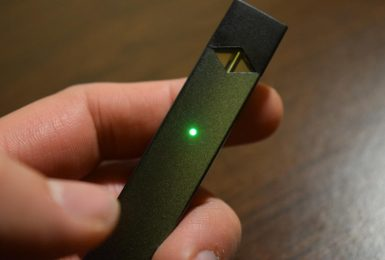
Researchers from three different US universities recently published a study in which they compare the effects of nicotine-containing pod systems and tobacco cigarettes on African American and Latinx smokers.
Although the rate of tobacco smoking among Black and Latinx groups is about the same, or even lower, when compared to White people, these two groups are are at increased risk for adverse effects associated with smoking, including, lung cancer. In an attempt to identify viable alternatives for smokers and reduce exposure to life-threatening, toxic compounds, researchers at The University of Kansas Cancer Center, California State University San Marcos and Brown University recently compared “fourth generation e-cigarettes”, aka pod systems (JUUL, Vladdin, VEIIK Airo, etc.) to tobacco cigarettes in a six-week-long randomized trial.
“Nicotine is one of the most addictive substances on earth, both in animal models as well as to humans,” said Dr. Jasjit S. Ahluwalia, professor of behavioral and social sciences and medicine at Brown University, and senior author of the study. “So how can we help these people who can’t quit smoking combustible cigarettes? They need other options, and e-cigarettes may be one such option.”
“Fourth generation e-cigarettes contain high concentrations of nicotine and other appealing features that may support switching and reduce potential health risks among those who smoke combustible cigarettes,” Dr. Nikki Nollen, PhD, co-program leader of KU Cancer Center’s Cancer Prevention and Control research program, added. “We wanted to examine the biomarkers of exposure in both groups and determine the risk-benefit tradeoff of e-cigarettes.”
For this study, published in JAMA Network Open, researchers recruited 186 Black and Latinx smokers, asking 125 of them to switch to nicotine-containing pod systems for six weeks, while the other 61 acted as a control group by continuing to smoke tobacco. The recruited participants reported smoking about 12 tobacco cigarettes (half a pack) a day .
Although the study does not evaluate the capacity of pod systems to help smokers quit, the authors did report that by the end of the six-week trial, 28% of participants had transitioned completely to e-cigarettes, while 58% continued to use both products. But what scientist did evaluate thoroughly was the exposure to toxins associated with tobacco smoking, and the results were very encouraging.
Compared to participants who continued to smoke tobacco cigarettes, those who had managed to switch to fourth generation electronic cigarettes completely during the six weeks saw a reduction in levels of tobacco-specific carcinogens of up to 50%. Subjects who replaced some tobacco cigarette use with vape pods had slightly reduced levels of these same chemicals in their systems.
“What was most surprising was the magnitude of change experienced by those in the e-cigarette group,” Dr. Nollen said. “They reduced their NNAL by 64%, carbon monoxide by 47% and respiratory symptoms by 37% compared to those in the control group who continued to smoke cigarettes as usual.”
When NNK, a tobacco-specific lung carcinogen is metabolized, it is converted to NNAL, a specific biomarker than indicates exposure to tobacco products. And while e-cigarettes are treated as tobacco products, it seems they are much less so than others…
The study authors also measured participants’ levels of cotinine, a breakdown product of nicotine, and determined that there were no significant differences between the evaluated groups, which suggests that e-cigarettes proved very effective at delivering nicotine.
Nicotine salt pod system e-cigarettes are a real alternative for cigarette smokers,” Kim Pulvers, co-author of the study, told UPI. “Switching to pod e-cigarettes significantly reduced exposure to toxins which cause disease, [and] smokers who made a complete switch experienced the greatest reduction in exposure, [while those] who made a partial switch also experienced reduced harm.

“It’s possible that nicotine e-cigarettes and other harm-reduction products will be game-changers for our field,” Ahluwalia added. “I hope this study stimulates more people to do this research and to have an open mind about this. I also hope it inspires them to let science inform policy rather than emotion.”
Ah yes, putting scientific evidence over bias, wouldn’t that be something. Unfortunately, such views are not very popular in the field of medical research, at least where vaping is concerned. But don’t take may word for it, the low quality of vaping-related research is well-documented.
